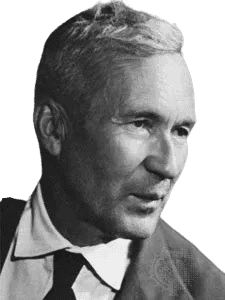Life and achievements
Early life
Andrey Kolmogorov was born in Tambov, Russia, on April 25, 1903, under unfortunate circumstances, as his mother died while giving birth to him. His father was an agronomist involved in politics and was killed during the Russian Civil War, and Kolmogorov was brought up by his aunts, particularly his aunt, Vera Yakovlevna. By age five, Kolmogorov was already proving himself to be a mathematical prodigy. Before he reached five years old, he made his first mathematical discovery, in which he discovered that the sum of odd numbers has a pattern.
Kolmogorov's early education started in a village school, but when he was a teenager, he moved to Moscow, where his education began in the true sense of the term. After completing his education, he joined Moscow State University in 1920, studying various subjects, including mathematics and history. During his undergraduate years, he produced a paper on the structure of landholding in Novgorod in the 15th and 16th centuries. His early work on Newton's laws of mechanics and set theory formed a basis for a very productive mathematical career. Already by 1922, he was able to achieve the feat of constructing a Fourier series that almost everywhere diverges.
While his interests were broad at the beginning of his studies, Kolmogorov became captivated by mathematics and probability theory. His first contact with Moscow's outstanding mathematicians, such as Luzin, Egorov, and Stepanov, significantly determined his academic course. By 1925, Kolmogorov had finished his education at MSU and had already gained recognition as one of the world's leading mathematicians, having published a paper on probability theory that was to change the course of the subject.
Legacy
Kolmogorov's contribution to modern mathematics is beyond doubt and versatile, as he has contributed to several fields, including probability theory, turbulence, and complexity theory. The book Probability Calculus with Elementary Theory of Probability, written by Khinchin in 1933, is still considered the basis for the further development of the probability theory as it is considered today. His work went beyond theoretical mathematics and into practical applications, especially in physics, and his work on the theory of turbulence is still felt to date.
Later, in the 1940s, Kolmogorov segregated his attention towards algorithmic complexity, where he proposed that the length of the shortest description of the object could define the measure of the complexity of an object. Since then, this concept has been developed into what is now known as Kolmogorov complexity, a central concept in computer science and information theory. His work in dynamical systems, especially the KAM theorem that he did with Vladimir Arnold and Jürgen Moser, has been used to analyze the stability of orbits in celestial mechanics.
Kolmogorov was also an excellent teacher and spent a lot of time teaching and training young generations of mathematicians. He also worked to establish a program for gifted children in education, trying to encourage mathematical giftedness and interest in literature, music, and science. Kolmogorov's passion for teaching revolutionized the Russian educational system.
For his accomplishments, Kolmogorov was awarded many high-ranking honors, such as the Lenin Prize, the Stalin Prize, and the Wolf Prize in Mathematics. His contributions to mathematics, physics, and computer science remain widely popular, making him one of the most influential mathematicians of the twentieth century.
Milestone moments
Apr 1, 1922
Kolmogorov Develops a Fourier Series
In 1923 19, Kolmogorov produced a Fourier series developed to diverge almost everywhere.
This made him receive international recognition at a very young age in his career.
His work provided an example of an unexpected outcome shocking the field specialists in mathematical analysis.
This could start Kolmogorov's interest in probability and set theory.
Jun 12, 1931
Kolmogorov was appointed as a professor at the Moscow State University
By 28, Kolmogorov was appointed a professor at Moscow State University.
This position signified the start of his academic career in teaching and research.
His appointment was due to his work in probability theory and, more specifically, his paper on Markov processes.
Kolmogorov was an excellent teacher, with many students in his class, many of whom became famous mathematicians.
Jul 15, 1933
Publication of "Foundations of the Theory of Probability"
This year, Kolmogorov published his most important work, the Foundations of the Theory of Probability.
This monograph provided the modern axiomatic framework for probability theory, which changed the course of the subject.
It made Kolmogorov the world's leading authority on probability and introduced the critical formulae of the topic, including conditional expectation.
Jul 22, 1941
Pioneering Work in Turbulence
Kolmogorov published two papers that are the basis for the statistical theory of turbulence.
These papers brought to light scaling laws for turbulence, which are still significant in fluid dynamics.
His work in turbulence is widely regarded as one of the most significant accomplishments in classical physics.
